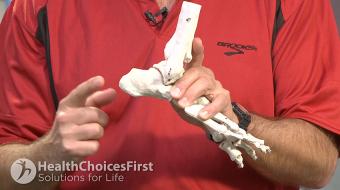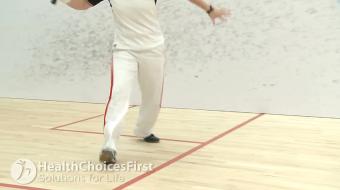Featured Videos
Premier Practitioners
All Videos
Achilles tendinitis is pain felt in the region of the heel at the back of the foot. Pain can often be felt either at the region of the heel or anywhere up the tendon itself. In helping deal with Achilles tendonitis problems, physicians want to decrease inflammation and reduce tension on the calf muscles.
The most common way to treat an Achilles tendon injury is with non-surgical methods, including the RICE method (rest, ice, compression, and elevation) and anti-inflammatories. Your sports medicine physician or orthopedic surgeon may recommend a cast, which holds your foot in a toes-down position and allows the Achilles tendon to heal. Your healthcare provider may recommend that you see a physiotherapist, as you’ll benefit from stretching, doing self-massage or rolling on a ball.
Surgery for Achilles Tendon Injuries
Ambulatory care procedures (also known as minor procedures) are operations that are done under local anaesthesia only, are less than 20 minutes duration, do not require preoperative fasting, and although we recommend that someone drive you home, this is not mandatory. The post operative course for the most common procedures will be presented
If you do require surgery following an Achilles tendon injury, it involves stitching and one end of the tendon onto the other so that it heals at the correct length. It’s very important that the tendons are at the right length so that the muscles that fire around those tendons can work properly. If most of the Achilles tendon is damaged, the surgeon can use the tendon that goes to the big toe to support the tendon.
Tendon operations are often difficult to do, and they often lead to problems with wound healing. There are a number of techniques being developed to reduce the amount of skin incision that’s required to repair the tendon. You will need to wear a cast or walking boot for 6 to 12 weeks after surgery. People often undergo Achilles tendon surgery if their doctor feels that surgical options are better than non, or if non-surgical options don't work.
Main operating room procedures
If you have been scheduled for a procedure in the main operating room, then likely you will have been asked to be fasting from the night before, and to have someone drive you home and be with you for the first 24 hours after surgery. Many procedures are performed after just freezing your arm. If requested, intravenous sedation will be administered so that you may even fall asleep during the procedure. A variety of narcotics are usually prescribed after surgery. Pain management usually starts with maximizing on non narcotics options. This usually starts with 1000mg of Tylenol along with 400mg of Ibuprofen (Advil) every 6 hours. If you are taking another anti-inflammatory (Aspirin, Naprosyn, Voltaren etc), then do not take Ibuprofen. A narcotic analgesic will likely have been prescribed. The most common is Tylenol #3. This medication contains a narcotic (codeine) along with Tylenol. If taking Tylenol #3, then do not take additional Tylenol, but please continue with the Advil. If only taking one tablet of Tylenol #3, then supplement with additional Tylenol up to a maximum of 1000mg every 6 hours. Other narcotics may not contain Tylenol (like oxycodone and hydromorphone), and you should be taking a full dose of Tylenol (1000mg) every 6 hours along with the Advil. Discontinue the narcotics as soon as you can.
Some procedures require immobilization after completion. If you do not have a splint or cast after your surgery, you will be asked to keep your dressing on for 48 hours, followed by light bathing and washing of the wound. Do not soak your wound until after your suture have been removed. If your hand has not been immobilized, it is very important to move your fingers from fully straight to fully bent as frequently as possible.
Talk to your healthcare provider if you'd like more information on Achilles tendinitis.
Visit HealthChoicesFirst.com for more videos and resources on orthopedics.
Print this Action Plan and check off items that you want to discuss with your healthcare provider
-
The most common way to treat an Achilles tendon injury is with non-surgical methods, including the RICE protocol (rest, ice, compression and elevation) and anti-inflammatories. Your sports medicine physician or orthopedic surgeon may recommend a cast, which holds your foot in a toes-down position and allows the Achilles tendon to heal.
-
Your healthcare provider may recommend that you see a physiotherapist, as you’ll benefit from stretching, doing self-massage or rolling on a ball.
-
If you do require surgery following an Achilles tendon injury, it involves stitching and one end of the tendon onto the other so that it heals at the correct length. It’s very important that the tendons are at the right length so that the muscles that fire around those tendons can work properly.
-
Tendon operations are often difficult to do, and they often lead to problems with wound healing. There are a number of techniques being developed to reduce the amount of skin incision that’s required to repair the tendon.
-
You will need to wear a cast or walking boot for 6 to 12 weeks after surgery.
Adherence:
Adhering to your medications, prescribed exercises or lifestyle changes (such as dietary changes, smoking cessation, reduced alcohol consumption, etc.) is essential to improving health outcomes successfully. Compliance to any prescribed treatment is the number one thing you can do to ensure positive changes and optimal treatment outcomes.






